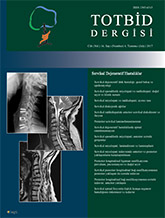
Ossification of the posterior longitudinal ligament (OPLL) occurs when the fibroblast tissue of ligament is displaced in time by ectopic new bone tissue. Most commonly, C4- C5 level of ossifiying tissue begins to thicken to create a spinal lesion in the spinal canal, and consequently narrowing of the spinal canal leads to neurological symptoms. As it is more common in people of Eastern Asiatic origin, foregoing researches on this disease were seen in countries such as Japan and Korea. In Japan, the incidence of cervical complaints among hospitals is between 1.9% and 4.3%. The incidence is lower in the North American and European populations; reported rates range from 0.1% to 1.7%. In this section, the anterior approach to cervical OPLL will be discussed.